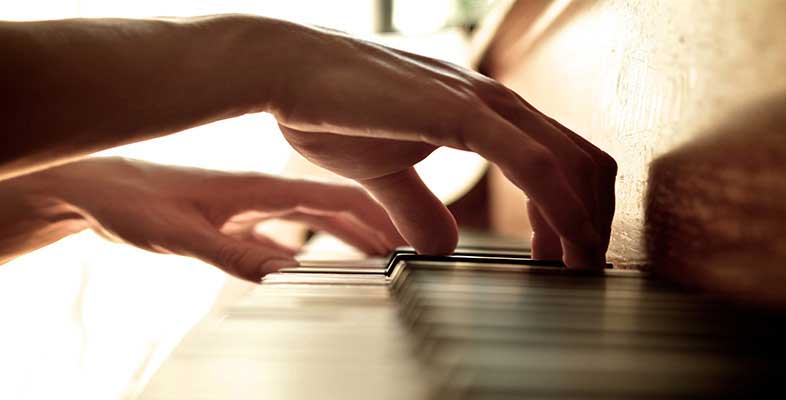8.3 Following piano scores in practice
As you follow the two staves of a piano score, the upper staff will use, for the most part, the treble clef (and be played by the pianist’s right hand), and the lower staff, the bass clef (and be played by the pianist’s left hand). Basically, you need to follow the upper staff, because this is usually where the melody is. Concentrate on the way the rise and fall of the melody is reflected in the higher or lower position of the note heads on the staff. The ups and downs of the melody should correspond to the ‘undulations’ of the notated melody line. As you become familiar with both the sound and sight of a passage, you will be able to keep an eye on both the melody and the accompaniment as the music progresses. You will also be able to spot if the melody moves down to the lower staff, which happens from time to time.
In addition, keep a look out on the score for the changes in dynamics that you hear, or for places where there are rests in both staves. Sudden changes of loudness in the music or moments of silence, might help you to keep abreast of where you should be on the score, or help you find yourself if you are lost. Be prepared, too, for a possible change of clef, particularly with the lower staff. If the majority of notes that appear on the lower stave are above middle C, then a composer will more than likely change the clef from the bass to the treble.
Don’t be disheartened if you can’t follow a score at your first attempt. You will need several attempts (for each score) simply to become familiar with both the music and the score, and this needs a little time. But as you practise following scores, you will gradually become more proficient, and you will be able to understand more and more of the notation you are ‘reading’ and how this relates to the sounds you are hearing.
